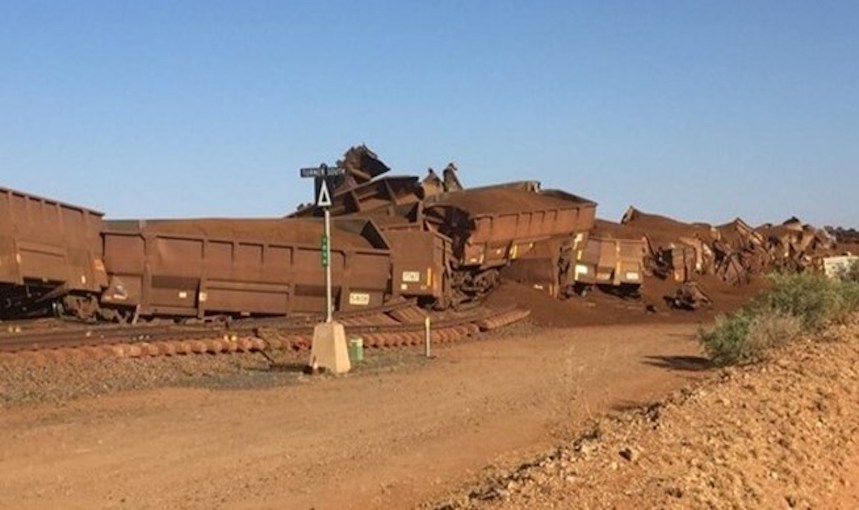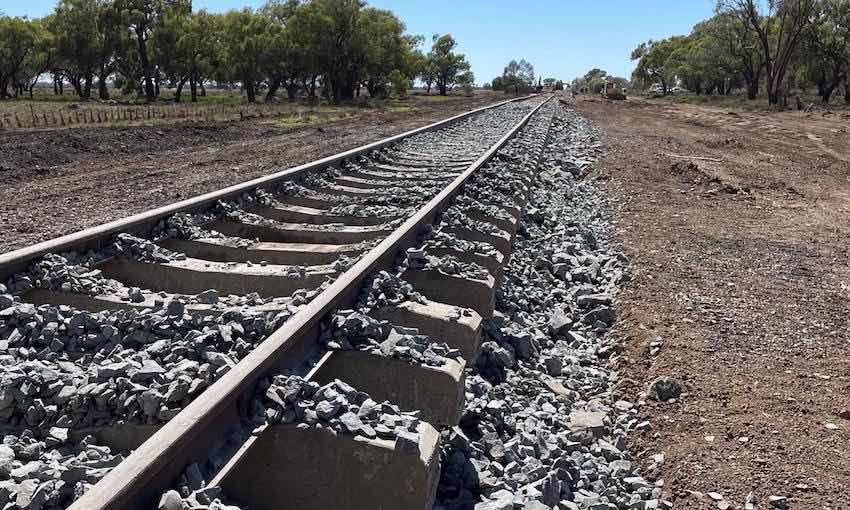AN investigation into the runaway and derailment of a loaded iron ore train south of Port Hedland has highlighted the importance of change management and risk-assessment processes.
The 2018 incident resulted in the destruction of two remote locomotives, 245 ore cars, and two kilometres of track infrastructure.
The final report from the Australian Transport and Safety Bureau concluded BHP’s iron ore trains were potentially vulnerable to a runaway event should a unique combination of events and conditions occur.
The 42,000-tonne train was being operated by a single driver on BHP’s Newman to Port Hedland railway when an inter-car connector separated, severing trainline communications between the lead locomotive and the ore cars toward the end of the train.
This initiated an automated emergency brake application, stopping the train as it was on a downhill grade.
An hour after the train stopped, the affected car control devices shut down, releasing the brakes on the majority of the ore cars.
The train then began to roll away without the driver onboard, travelling more than 90 kilometres over 40 minutes, before BHP’s Hedland control intentionally derailed it at a crossover to an adjacent track.
ATSB chief commissioner Angus Mitchell said a train runaway can cause injury or loss of life, and while there were no injuries in this situation, it did carry a significant financial and economic cost.
“A certain set of specific circumstances meant not completing a single safety-critical action – placing the automatic brake handle in the pneumatic emergency position – had a significant consequence,” he said.
“This safety-critical action relied extensively on the driver’s memory, and the investigation found there were limited processes in place to facilitate or cross-check a driver completing key safety-critical actions.”
The investigation found BHP did not clearly communicate the importance and reasons for this action to its drivers, reducing the potential for the drivers to recall the action.
According to the ATSB, the same error had been made on previous occasions by other drivers responding to similar incidents.
The investigation also found that while BHP’s risk assessment for its rail network identified numerous causes and critical controls for incidents of this nature, it was broad in scope and had limited focus on train runaways.
The ATSB said BHP reviewed the risk management framework associated with rail-mounted equipment interaction following the accident.
The company also updated its risk assessment, updated existing controls, and added controls related to potential train runaway incidents.
The ATSB also noted the driver had been working seven consecutive night shifts and examined BHP’s processes for managing driver fatigue.
It found BHP roster patterns for fly-in fly-out train drivers were conducive to result in levels of fatigue likely to impact performance, and there were limited processes in place to ensure drivers obtained sufficient sleep when working these rosters.
BHP has reportedly commissioned external fatigue experts to undertake a range of evaluation and development activities and has formed a working group to optimise train driver rosters.
“This investigation highlights that rail transport operators considering changes involving the integration of complex systems should utilise a systems engineering approach to identify hazards and then manage risk to ensure that the railway’s operations remain safe,” Mr Mitchell said.





